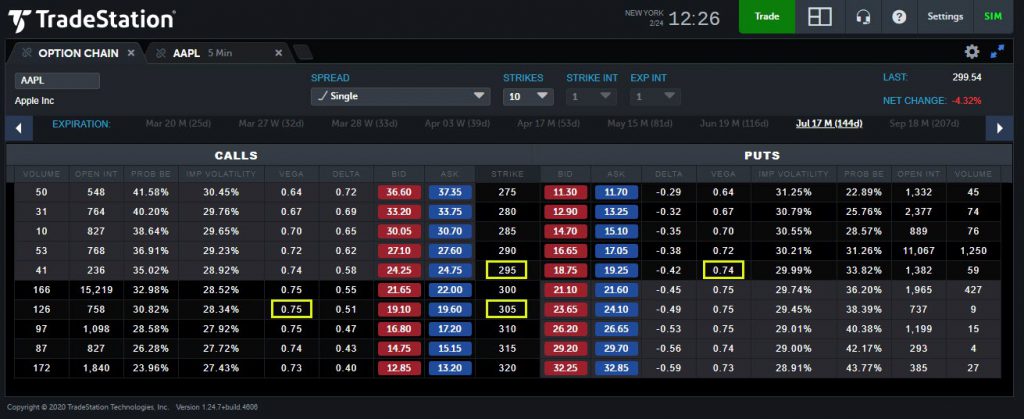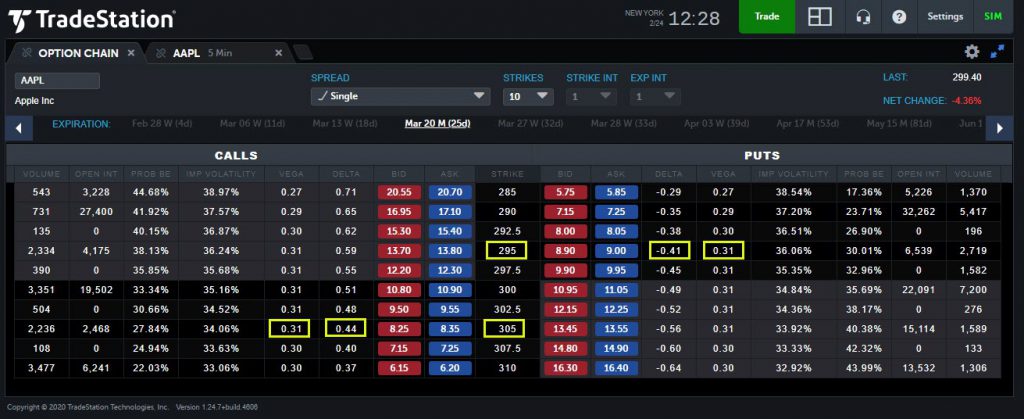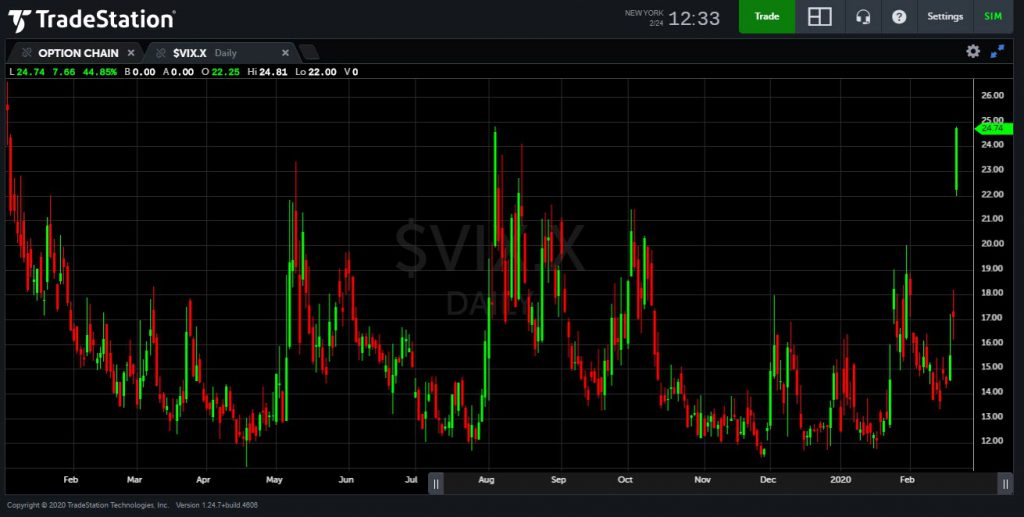Stocks are crashing because of coronavirus. Volatility is spiking. What does it mean and how can you learn from today’s crazy session?
It’s time for a crash course in options.
Volatility and Options
Volatility is the amount a stock or index moves. It’s expressed with an annualized number based on earlier price swings. This is called “historical volatility.” It’s often calculated over the previous 10 days and month.
There’s also implied volatility, which shows how much the market thinks a stock is going to move. Higher implied volatility translates into higher options prices.
Because they fix the price where investors can buy or sell, options essentially control movement. Therefore, more movement (volatility) makes options worth more.
Vega and Volatility
How exactly does volatility impact options prices? Traders get the answer by looking at “vega,” which indicates how much premium will increase based on implied volatility rising 1 percentage point.
For example, the Apple (AAPL) July 295 puts have 0.74 vega. Its July 305 calls have almost the same vega.

Options traders may ignore Vega when the market’s calm. But at times like this it can be essential to success. Here are some points to remember:
- Calls typically make money when a stock goes up. But if they have a lot of vega and you buy them when implied volatility is high, they might lose value when the stock rebounds. Why? See the next point.
- Volatility increases when the market is crashing, but fades when it recovers. That’s why calls can lose value despite prices rising.
- Longer-dated options have more vega.
- Therefore, traders looking to play a rebound may want to focus on shorter-term options with more delta and less vega.
Delta and Options Prices
Delta is another Greek letter that helps traders get their heads around options. It indicates how much premium changes based on the underlying stock moving $1.
For example, AAPL’s March 305 calls have 0.44 delta. So, they’ll gain about $0.44 from AAPL rising $1. Notice that their vega is much lower (just 0.31) because they expire sooner.
The March 295 puts have -0.41 delta. Notice that puts have negative delta. That’s because they move in the opposite direction. Every $1 that AAPL falls will boost these puts by about $0.41.

Using the VIX
The “VIX” is another useful tool. It’s Cboe’s volatility index for options on the S&P 500. This makes the VIX an important measuring stick for overall levels of fear or complacency in the market.
Not surprisingly, it shoots higher when the market drops like today. Traders can use the VIX as a guide to know what the implied volatility might do on large companies like AAPL. In fact, it’s always a good idea to keep an eye on the VIX to know when the overall market may be too scared or overconfident.
In conclusion, the S&P 500 and Nasdaq-100 are having their biggest drops in over a year. Volatility’s having its biggest gain in over a year. Markets like this are ideal for options traders looking to minimize their capital at risk and to hedge. Hopefully this quick guide helps you get started.
























